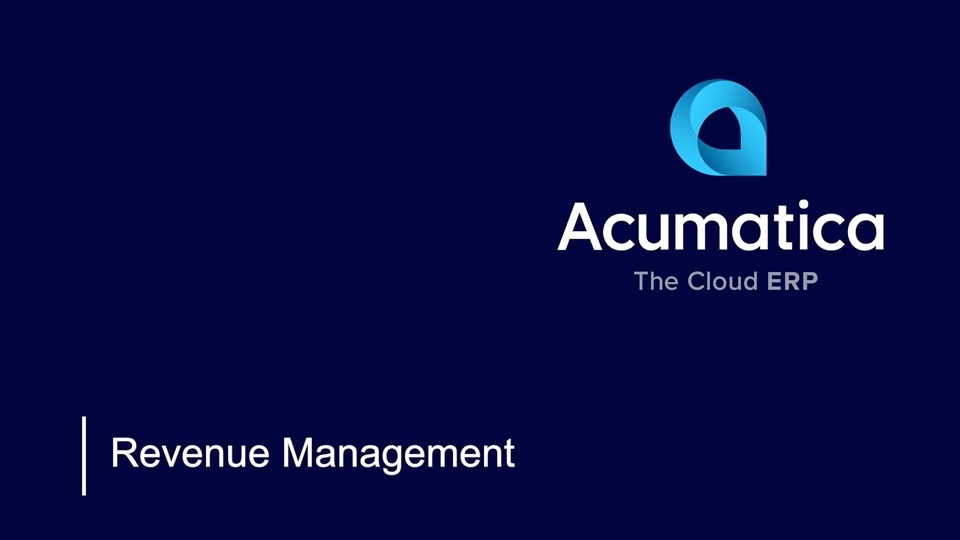Improve control and accounting for revenue recognition in future periods.
How Deferred Revenue Accounting can work for you
Deferred revenue is advanced payment received by a company for products or services it will provide in the future. Because customers are owed the products or services, the prepayment is considered a liability until the customers receive their order. Once the order is received, the deferred revenue is recognized as earned revenue.
With Deferred Revenue Accounting software, you can simplify and automate deferred revenue accounting tasks, including the calculating and posting of deferred revenue in financial statements. You can also seamlessly integrate with other financial modules, create customized deferral schedules, utilize multiple recognition methods, and remain recognition compliant.
Key Benefits of Deferred Revenue Accounting for your Company
-
Deferred Revenue Accounting
Automatically calculate deferred revenue according to established schedules. Deferred revenue is automatically posted and recognized in financial statements.
-
Integrated with other Financial Modules
Templates can also be applied to payables for expense amortization. Attach schedules Inventory items so Sales Orders and Purchase Orders are processed according to the proper accounting rules.
-
Customized Deferral Schedules
Create schedules based on templates or from scratch to model complex requirements. Schedules can be linked to specific transactions and line numbers on any income document.
-
ASC 606 and IFRS 15 Compliance
Manage complex multi-element sales scenarios required by ASC 606 and IFRS 15 and customize Acumatica’s logic to meet your unique business requirements and workflow.
-
Multiple Recognition Methods
Recognize revenue evenly across financial periods, prorate by number of days, or recognize revenue when payments are received. Comply with all recognition requirements – even in situations where revenue collection is uncertain.
Important Features of Deferred Revenue Management
Map groups of customers to different Accounts Receivable (AR) accounts in the general ledger. Override the default AR account during document entry. Acumatica tracks account assignments and ensures correct offsets and amounts are applied when payment is applied.
Divide inventory items into component parts to apply different deferrals within a single inventory item. Use this feature to automate revenue recognition for items with included warranties or other complex situations.
Issue invoices and collect payments in any currency. Acumatica maintains customer balances in foreign and base currency. Automatic currency translation makes real-time adjustments, performs currency triangulation, and computes gain or loss.
Schedule revenue recognition to occur at the start of a financial period, the end of a period, or on a fixed day during each period. Create recognition documents each period or skip periods.
Calculate sales and VAT taxes and prepare for tax filing reports—automatically. Acumatica supports multiple tax items per document line, deduction of tax amount from price, and tax on tax calculation.
Enforce credit limits automatically at order entry and at invoicing. Customer configuration options can block invoice processing or issue a warning, create Dunning messages for past-due accounts, and temporarily increase credit limits.
Automatically find records in Accounts Payable, Accounts Receivable, and General Ledger impacted by cash, and post them to the newly created cash ledger along with the applicable expense and revenue accounts.
Apply payments automatically to the oldest outstanding documents. Easily void incorrect payment application—all affected balances will be reversed automatically.
Calculate sales commissions automatically. You can split commissions among multiple salespeople, link them to specific line items, and pay when the invoice is issued or paid. Calculate commissions on a monthly, quarterly, or annual basis.
Calculate and apply overdue charges automatically. Compute overdue charges as a percentage or minimum charge amount.
Write off small document balances, controlled by maximum write-off limit and eligible customers list.
Specify which individuals and roles can view and modify customer account information and balances. Validate dates on financial forms and reject dates that do not match a period on the master calendar.
Get a complete audit trail of all transactions. Correct errors by reversing fully documented entries. The system tracks user IDs for all transactions and modifications. Notes and supporting electronic documents are attached directly to the transactions.
 Canada (English)
Canada (English)
 Colombia
Colombia
 Caribbean and Puerto Rico
Caribbean and Puerto Rico
 Ecuador
Ecuador
 India
India
 Indonesia
Indonesia
 Ireland
Ireland
 Malaysia
Malaysia
 Mexico
Mexico
 Panama
Panama
 Peru
Peru
 Philippines
Philippines
 Singapore
Singapore
 South Africa
South Africa
 Sri Lanka
Sri Lanka
 Thailand
Thailand
 United Kingdom
United Kingdom
 United States
United States



